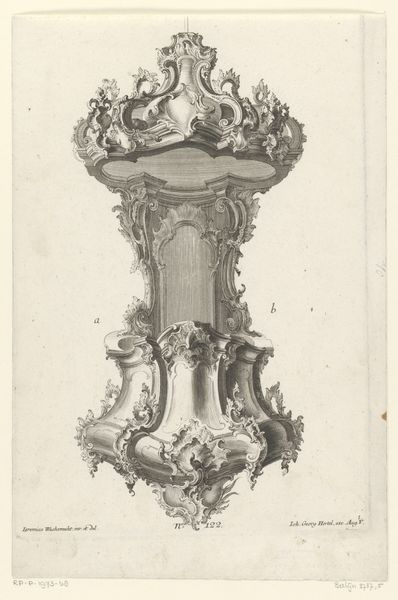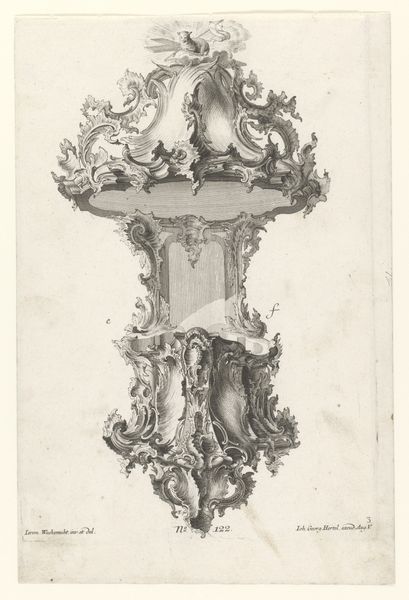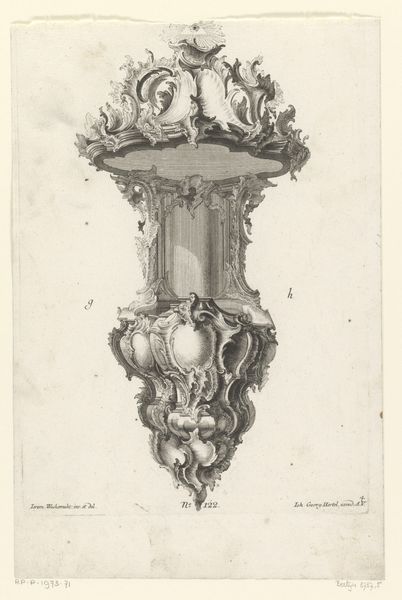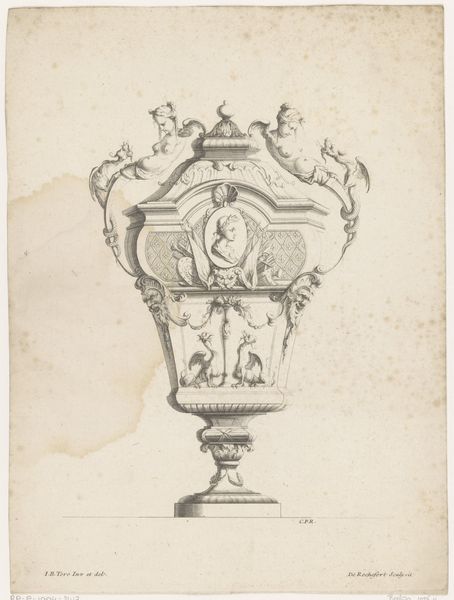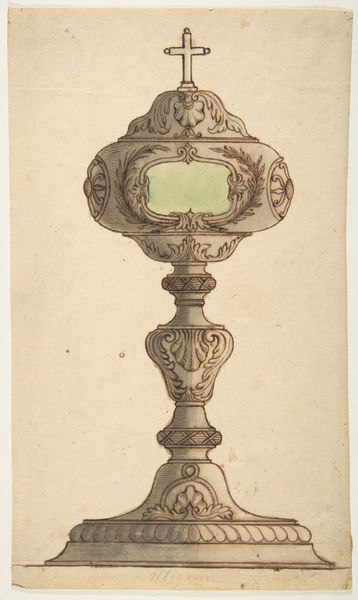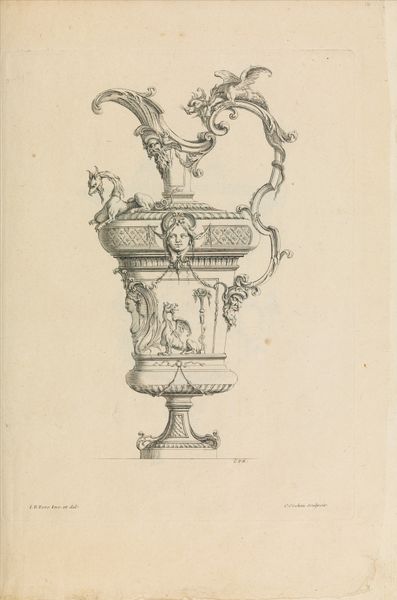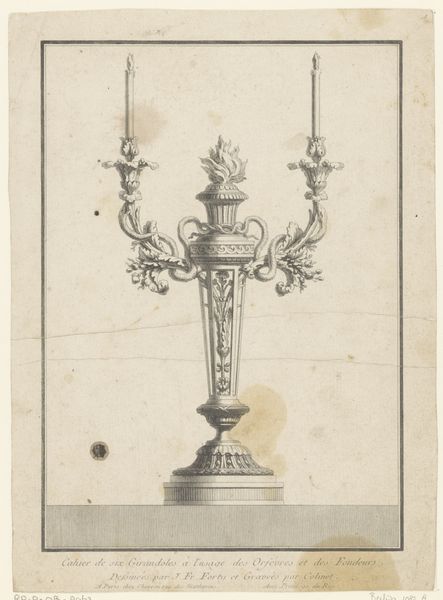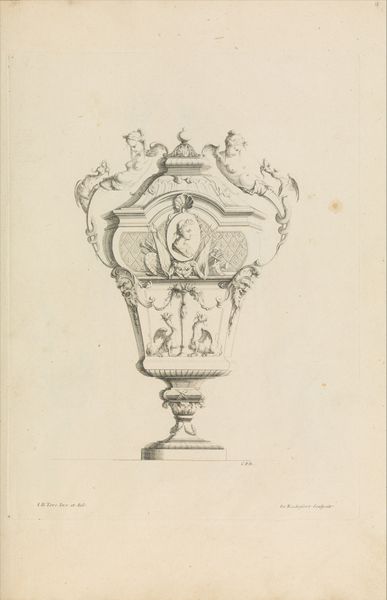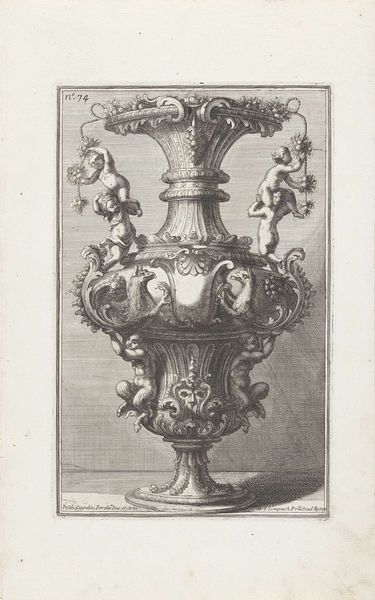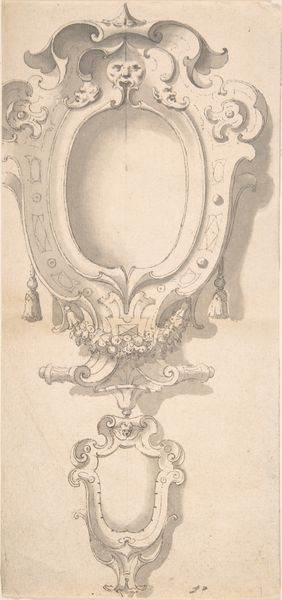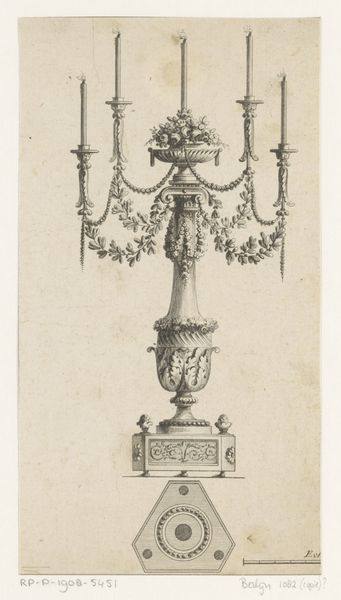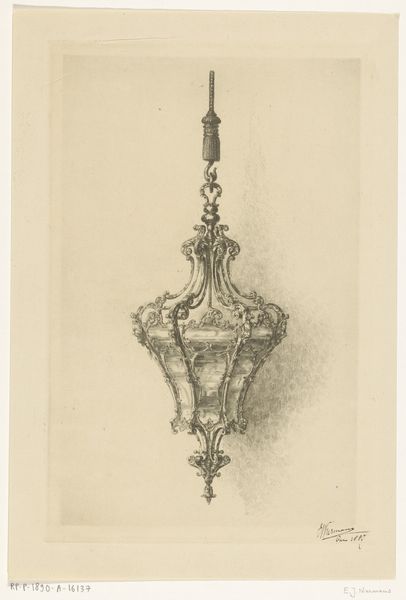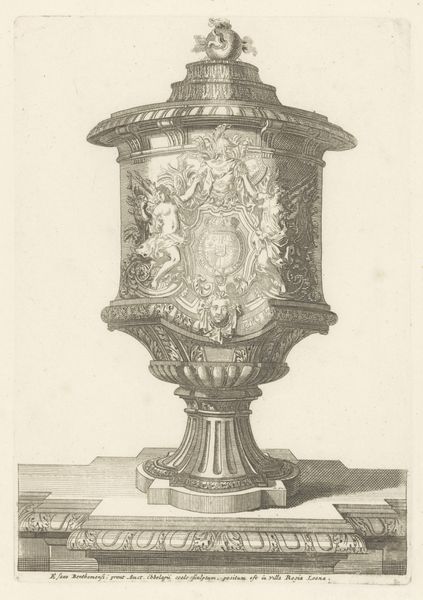
#
quirky sketch
#
pen sketch
#
old engraving style
#
personal sketchbook
#
sketchwork
#
ink drawing experimentation
#
pen-ink sketch
#
pen work
#
sketchbook drawing
#
sketchbook art
Dimensions: height 318 mm, width 203 mm
Copyright: Rijks Museum: Open Domain
This is a design for a pulpit, made around the mid-18th century by Emanuel Eichel, rendered in pen and ink. Though just a drawing, it gives a sense of the ornate woodworking that would have gone into the finished object. The pulpit's form is typical of the period: a box for the preacher, supported on a curving base and crowned with symbolic ornament. It is this profuse carving that would have tested the maker's skill. Notice the scrolling acanthus leaves, the volutes, the moldings. These would have been carved in wood, likely by a specialist brought in for the job. Consider the labor involved. While Eichel may have been the lead designer, many hands would have been needed to bring the pulpit to life. This division of labor was typical of the era, and resulted in spectacular objects that combined design ingenuity with craft virtuosity. It reminds us that even a single artwork can be the result of collective effort, a convergence of design, material, and making.
Comments
No comments
Be the first to comment and join the conversation on the ultimate creative platform.
